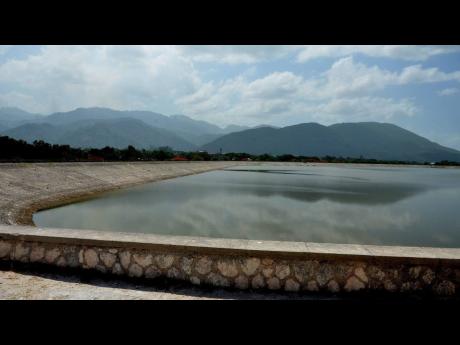Shonel Dwyer | Revitalising Jamaica’s legacy and entitlement – water
Jamaica, the fabled “land of wood and water”, was so named by its indigenous people. A land enriched and naturally abundant is the birthright of every Jamaican.
While it may sound like a cliché, the truth remains: Water isn’t merely a commodity. It is the fundamental essence of life itself.
Jamaica proudly boasts an impressive per capita renewable freshwater resource estimate of 3,687.75 m3, ranking first in the Caribbean and 74th globally (Food and Agriculture Organization, AQUASTAT data – 2018). A legacy envied, especially when compared to nations like Kuwait, Qatar, the United Arab Emirates, and Egypt, who grapple with severe water scarcity with less than 50 m3 per capita.
With the notion of more than enough, water development in Jamaica progressed almost fatally, particularly in the southern agricultural plains of St Catherine and Clarendon. Running riot of a legal framework for proper management, depletion of water resources started to occur in the 1960s regarding quantity and quality. As a result, the Water Resources Act was passed in 1995 and a body corporate to it fully established (The Water Resources Authority).
Amid the legal protection of our natural ‘wealth’ since 1995, recent years have once again cast a shadow on Jamaica’s water-rich status. The National Water Commission’s (NWC) islandwide water-prohibition decree, enacted on May 23, served as a wake-up call. This move shed light on the inadequacies of our system storage capacities and vulnerability to droughts, demanding innovative solutions from Government, industry, and citizens alike.
Delving into Jamaica’s hydrogeological setting (occurrence and distribution of water) reveals a concealed treasure trove. Eighty-four per cent of Jamaica’s exploitable water resources actually lies underground in limestone rocks (the ‘Limestone Aquifer’) and in riverine alluvium deposits (the ‘Alluvium Aquifer’). The Tainos, in their wisdom, may not even have been aware of or comprehended the vastness of these underground reserves, observing only a fraction (16 per cent) of Jamaica’s water resources as free-flowing rivers and springs.
CHALLENGES PERSIST
Yet challenges persist. Variability in rainfall patterns across Jamaica, especially in the seasonal/temporal distribution will most likely be exacerbated by climate change. Water-supply systems most vulnerable to these seasonal rainfall lows and droughts are our surface water bodies unsupported by baseflow. Baseflow is the portion of the streamflow that is sustained between precipitation/rainfall events, diffusely fed to streams by pathways from beneath the river bed.
Our water resources also vary in space (geographically), with the north draining basins having more prolific water resources – such as in Trelawny, Portland, and St Ann – than those in the south. This uneven distribution makes clear that spatial inequities in the occurrence and distribution of water will cause stress on water supply to some parts of the population.
The majority of the Jamaican population lives in the ‘arid’ southern parishes, receiving markedly less than average rainfall. For example, The Kingston Metropolitan Area (KMA) holds one-fifth of Jamaica’s total population. While constituting 20 per cent of Jamaica’s population, the KMA’s physical footprint on the total geographic land area is a mere 1.6 per cent.
Such a burgeoning urban centre places tremendous pressure on age-old water supply systems. Since the 19th century, when Kingston received its first public water supply, from the Hope River, water systems have formalised and expanded to two major rain-fed reservoirs and a dense network of tube wells in the Liguanea Alluvium Plains. Storage in these reservoirs are invariably affected by rainfall distribution patterns throughout a given year and run the risk of drying up without adequate rainfall, hence prohibition decrees from the commission on water use.
GROUNDWATER WELLS
Parts of the KMA are supplied by groundwater wells, for example, sections of Havendale, Forest Hills, Belvedere, and Queen Hill, and as a result, do not experience similar water woes in periods of low rainfall. Groundwater-fed systems are not commonly affected by short-term droughts as storage underground is naturally quite vast and not to be compared to the construct of a manmade reservoir, where vast storage requires vast investments. So why then not abstract groundwater across the KMA, you may ask, if groundwater storage is so vast?
Contamination from nitrate due to leakage from absorption pits (during the period of fastest growth and urbanisation of the city) and chloride via saline intrusion (along the coast) has led to the closure of the majority of the wells in the Kingston hydrologic basin. This has limited our supply primarily to the drought-impacted surface water sources at Hermitage and Mona reservoirs. There has been minimal progress in the further development of water-supply systems in the KMA due to these challenges on water quality and its viability for domestic use.
The solution demands creativity and collaboration. It necessitates transference from the bountiful northern basins to quench the thirst of the southern regions. We have strategically powered a nation using imported fossil fuels in the absence of indigenous energy resources. This should inspire our commitment to harness and distribute our internal water resources efficiently. The road ahead might be complex and costly, but as the dry season looms from December 2023 to April 2024, we stand at the brink of change. Government and Opposition senators are at one on the need for rainwater harvesting as a solution to the scarcity of water supplied by the National Water Commission, an idea made pertinent in a May 30 article.
There needs to be concerted and collaborative efforts to address the water problem, especially catering to the burgeoning urban population.
- Shonel Dwyer is senior technology officer at the National Commission on Science and Technology (NCST). She is a geologist who has worked as a specialist in natural/water resources management and the local oil and gas sector. Send feedback to columns@gleanerjm.com.



